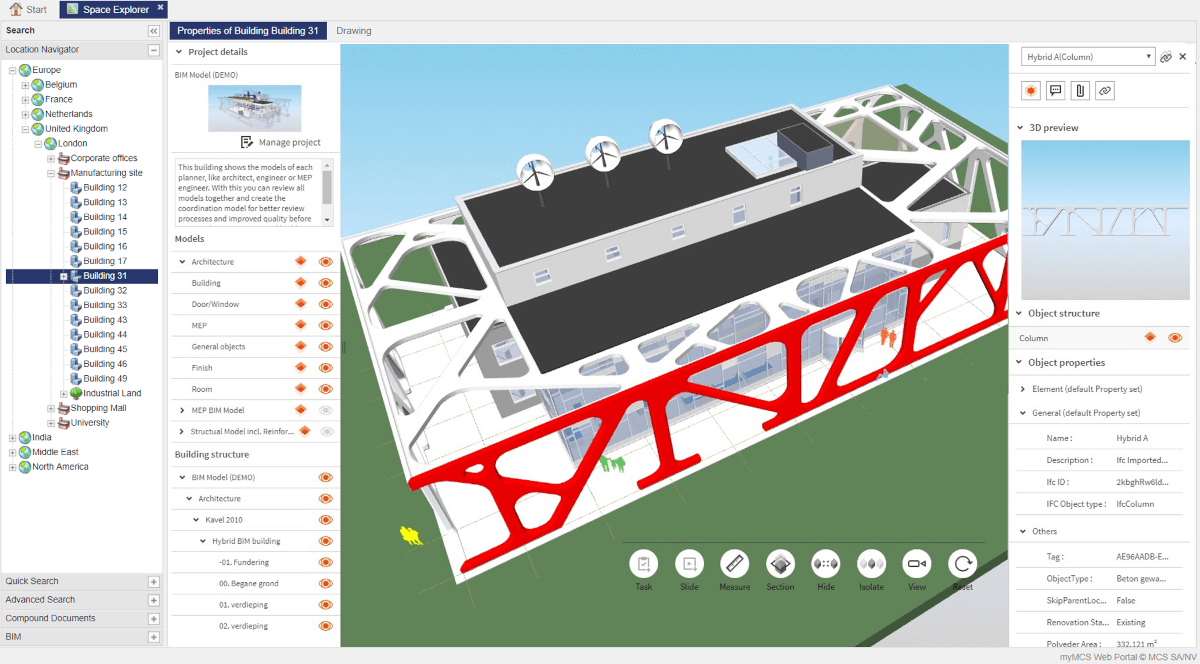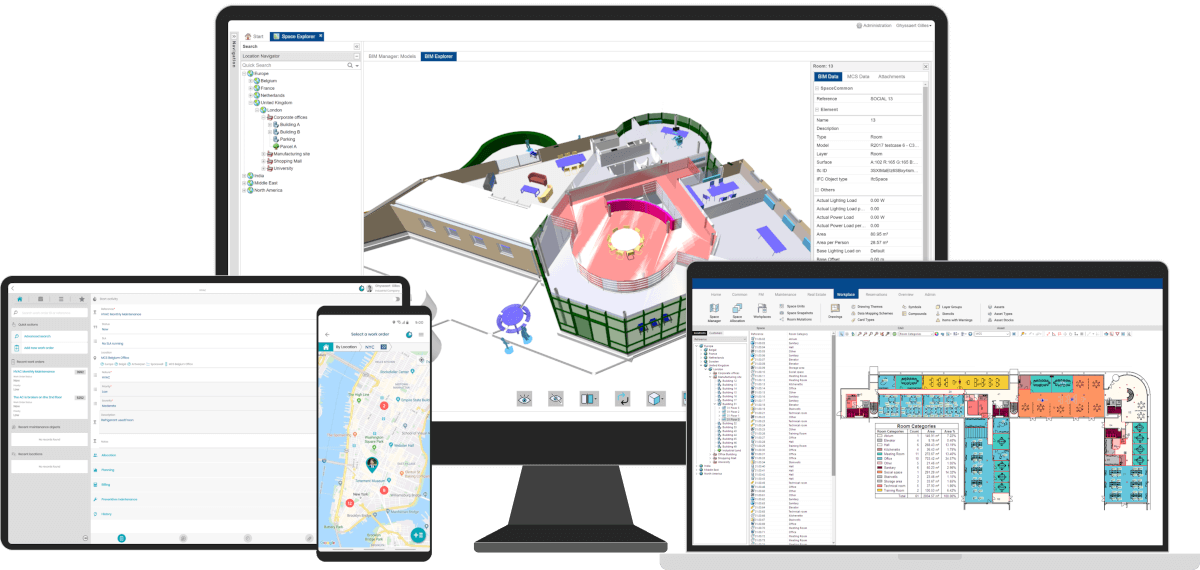By Nigel Rees, Product Director for Cloud Solutions at ALLPLAN
The architecture, engineering, and construction (AEC) industry has been changing the processes that govern the whole construction cycle. While in the past it has been firmly entrenched in methodology that has not really allowed it to change, the widespread adoption and evolution of Building Information Modeling (BIM) has opened up opportunities to transform processes. Now, project information can be used well beyond simply the design and construction phases – leading to Building Lifecycle Management (BLM).
What is Building Lifecycle Management?
Some would say that BLM is the same as BIM Level 3. As BIM Level 3 essentially focusses on the integrity of data and availability of that data throughout the whole project lifecycle, then it is easy to see that the two share the same goals. However, BLM covers a wider range of application.
A building’s lifecycle consists of two parts: the construction and the operation. Within the construction part, we have all the disciplines that contribute to the actual construction of the facility, including the planning, design, detailed design, etc. Upon completion, we then enter the operate phase of the facility. The goal from the construction phase is to have all the information packaged in one place for a clean and effective handover. From the operations side, the goal is to have an information set that can be built on: it becomes part of the live data set and is enriched and used to bring about efficiencies in maintaining and operating the facility.
It is important to realize that our responsibility in the planning, design, and construct phase is not over at the point of completion and handover – we must ensure our data is accessible and can be built upon over time. Hence, the term Building Lifecycle Management.
Building Lifecycle Management in Practice
If we use that as a broad definition of BLM, then what does this look like practical terms for the industry? When it comes to building projects, terms such as collaboration, coordination, interoperability, and a single source of truth are often heard – and these terms are largely associated with BIM. Combined with advances in technology, BLM thus becomes an extended collaborative process that brings all disciplines together throughout the lifecycle of a project with all information accessible to all. We bring this data into one single platform and allow it to be shared whilst also managing the data and controlling the process.
Benefits of Building Lifecycle Management
Every handover of information during a project is where waste occurs, re-work happens, and data integrity is lost. BLM avoids all these issues by ensuring continuous information collection and distribution. Data retention is improved, not just between disciplines but across phases – providing knowledge about what has happened in the previous phases of the building lifecycle.
Another obvious advantage is the ability to access data whenever it is required. When information is easily accessible, collaborative decision-making becomes easier and far more effective. In turn, approvals are quicker and can be immediately documented in a digital process. Cost overruns can be avoided by using connected systems and automation to manage projects more effectively and ensure overruns happen less frequently.
How Does ALLPLAN Support Building Lifecycle Management?
Most projects will use several software solutions during the design and construction process. An environment to bring all the data together from these different tools is important, and Bimplus by Allplan provides the capability to do this.
The nature of the data contained within Bimplus and the neutralized format means that any number of services can be connected in. Bimplus can therefore perform the role of an end-to-end model management solution. Where appropriate, we make our own connections to software to enable the BLM process, ensuring the safe handover of data. In other cases, we ensure that the data we have in place is available to all so it can be transferred and maintained through OPEN BIM processes.
 © Spacewell
© Spacewell
I mentioned that BLM and BIM Level 3 share some of the same goals – and now we are able to realize this transactable and interoperable data with our Bimplus technology. While this has been widely discussed since the introduction of BIM, true integration and high integrity of information transfer has been difficult to achieve. At the point of handover, data is still fragmented in a large number of cases. Bimplus has the potential to bring all this together and be the project’s glue from start to finish.
For example, we have implemented Bimplus with Spacewell’s facility management software, MCS20. This ensures the preservation of data and accessibility of information beyond the construction phase. If the information and data we require already exists then it simply gets pushed along, and more importantly, also enriched. We ensure the integrity of that data at every step of the handover process.
 © Spacewell
© Spacewell
We don’t just do this for the operations side either – we have a responsibility to make these connections with every discipline in the project process. Whilst this is very much an ongoing process, we have already captured the structural engineering subset. By teaming up with our sister company SCIA, we have a solution to transfer all the relevant data from our Allplan models through Bimplus and then onto any structural analysis software through SCIA’s AutoConverter. This is dependent on the neutralized data that we develop within Bimplus, which can then start the process of sharing data with structural engineers. Another important – and much relied upon – tool that Bimplus can connect to and exchange data with is Microsoft Excel, which can assist with further data analysis during design and construction.
A Connected, OPEN BIM Future
All of this should now start to paint the picture of how committed we are as an organization to meeting the changing technology needs of the AEC industry and how we are delivering solutions to tackle the real challenges the industry faces – including interoperability and the accessibility, integrity, and longevity of project data. We also offer a free, 30-day trial of our OPEN BIM modeling software to demonstrate how easy it can be to make the switch from providing information to effectively managing it across a building’s lifecycle.
Learn more and watch the presentation now.

Nigel Rees, |







